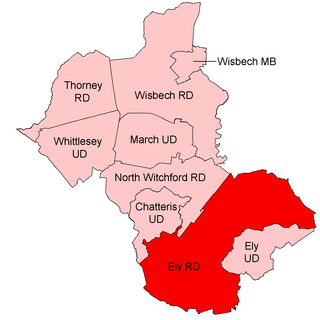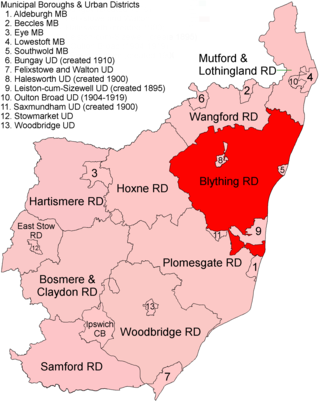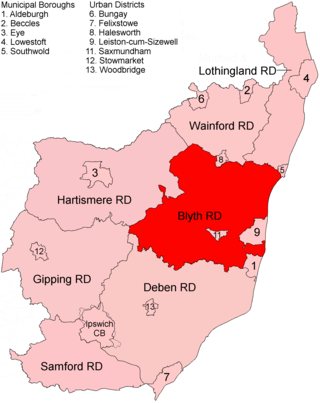Wing Rural District was a rural district in the administrative county of Buckinghamshire, England. It was created in 1894 with the name Linslade Rural District, but was renamed Wing Rural District in 1897 when Linslade itself was removed from the district to become an urban district. Wing Rural District was abolished in 1974 to become part of Aylesbury Vale District.
Winslow Rural District was a rural district in the administrative county of Buckinghamshire, England from 1894 to 1974, covering an area in the north of the county.

Potters Bar Urban District was a local government district in England from 1894 to 1974, covering the town of Potters Bar and the village of South Mimms. The district was initially called the South Mimms Rural District, being renamed in 1934.
Wycombe Rural District was, from 1894 to 1974, a rural district in the administrative county of Buckinghamshire, England.

South Westmorland was a rural district in Westmorland, England from 1894 to 1974. It saw various boundary changes during its existence, particularly in 1935, when it absorbed Kirkby Lonsdale urban district, whilst parts merged with Ambleside and Grasmere Urban Districts to form Lakes Urban District at the same time. The district was abolished in 1974 under the Local Government Act 1972, with the area becoming part of the South Lakeland district of Cumbria.

Ely Rural District was a rural district in England from 1894 to 1974. It was named after Ely, but did not include the city itself, instead covering the rural area to the west and north of it. It formed part of the administrative county of the Isle of Ely from 1894 to 1965, when this was merged into Cambridgeshire and Isle of Ely.
East Elloe was a rural district in Holland in Lincolnshire from 1894 to 1974.
Long Crendon was a rural district in the administrative county of Buckinghamshire, England from 1894 to 1934.
Eaton Socon was a rural district in Bedfordshire, England from 1894 to 1934.

Hambleden Rural District was a rural district in Buckinghamshire, England from 1894 to 1934, covering an area in the south-west of the county.
St Albans Rural District was a rural district in the administrative county of Hertfordshire, England from 1894 to 1974. It surrounded but did not include the city of St Albans.
Kington Rural District was a rural district in the administrative county of Herefordshire, England from 1894 to 1974, covering an area in the west of the county.

Blything Rural District was a rural district within the administrative county of East Suffolk between 1894 and 1934.

Blyth Rural District was a rural district in East Suffolk, England, between 1934 and 1974.

Garstang Rural District was a rural district in the county of Lancashire, England from 1894 to 1974.
Woburn was a rural district in Bedfordshire, England from 1894 to 1900, covering Woburn and surrounding parishes.
Chipping Norton Rural District was a rural district in Oxfordshire, England from 1894 to 1974. It surrounded but did not include the town of Chipping Norton.
Witney Rural District was a rural district in Oxfordshire, England from 1894 to 1974. It surrounded but did not include the town of Witney.
Haverfordwest Rural District was a rural district in the administrative county of Pembrokeshire, Wales from 1894 to 1974, covering an area in the west of the county. It surrounded, but did not include, the town of Haverfordwest after which it was named.
Pembroke Rural District was a rural district in the administrative county of Pembrokeshire, Wales from 1894 to 1974, covering an area in the south of the county. It surrounded, but did not include, the town of Pembroke after which it was named.







